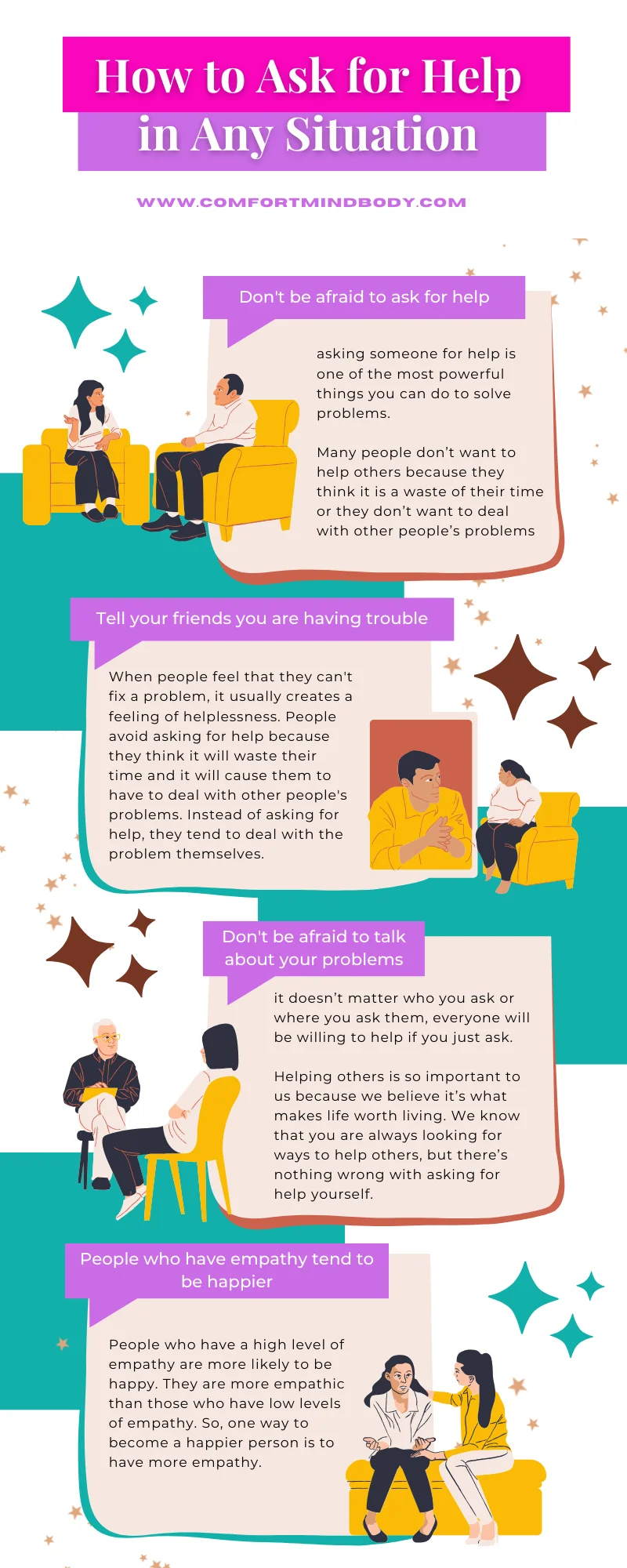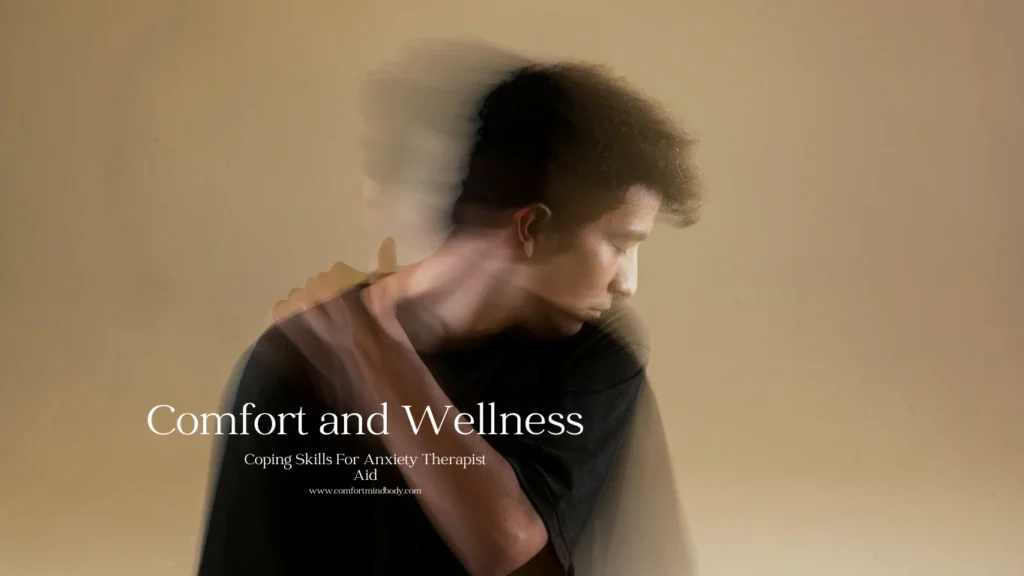Table of Contents
ToggleIntroduction:
Hey there, welcome! Coping skills for anxiety therapist aid is here. Anxiety is a common but often misunderstood emotional experience. It manifests in various ways. From persistent worry and racing thoughts to physical symptoms like a rapid heartbeat or muscle tension.
For many, anxiety becomes a barrier to everyday life, making even routine tasks feel overwhelming. So, what are coping skills for anxiety therapist aid?
The truth is, that managing anxiety effectively requires a tailored approach. What works for one person may not work for another, which is why building a personalized toolkit of coping skills is essential. Therapists often emphasize a balanced strategy that combines immediate relief techniques with long-term lifestyle adjustments.
In this article, we’ll explore therapist-recommended strategies for managing anxiety. Importantly, focusing on grounding techniques, cognitive behavioral strategies, physical activity, sleep management, and the role of professional help.
Whether you’re dealing with mild anxiety or more severe symptoms. All these coping strategies can provide tools to regain control, reduce stress, and improve your overall well-being.
By using these skills every day, you will take important steps to create a stronger, more mindful, and balanced life. This article will delve into the most effective techniques and encourage you to explore these tools to enhance your self-care.
1. Grounding Techniques
Coping skills for anxiety therapist aid:
First, grounding techniques serve as an anchor in moments of heightened anxiety. This helps to bring your mind back to the present when you’re overwhelmed by anxious thoughts or physical sensations. Uniquely, these exercises focus on mindfulness and sensory awareness, allowing you to regain control over your body and mind.
Next, one of the most accessible grounding techniques is deep breathing, particularly the box breathing method. Breathe in for four counts. Hold your breath for four counts. Exhale for four counts. Hold again for four counts. Then repeat.
So, box breathing slows the heart rate, and calms the nervous system. Which allows you to feel more in control of your body, especially during moments of panic or stress.
Finally, another powerful practice is mindfulness, which encourages you to focus on the present moment without judgment. This can be done through short exercises such as the 5-4-3-2-1 technique.
Where you identify five things you can see, four things you can touch, three things you can hear, two things you can smell, and one thing you can taste. This exercise helps you focus on the physical world instead of your anxiety. It keeps you grounded in reality.
Progressive muscle relaxation:
As we continue, progressive muscle relaxation (PMR) is also an effective technique. It involves tensing and then slowly releasing different muscle groups in the body. As a result, it reduces physical tension often caused by anxiety.
By pairing PMR with deep breathing, you can create a full-body relaxation effect. That relieves the physical symptoms of anxiety like a racing heart or tight muscles.
Grounding techniques offer immediate relief from anxiety by providing you with simple tools to stay present and calm. They’re particularly useful in moments of high stress, where racing thoughts or physical symptoms can feel overwhelming.
By practicing these exercises regularly, you can train your body and mind. This helps you respond better to anxiety and manage symptoms in real time.
2. Cognitive Behavioral Strategies
Coping skills for anxiety therapist aid:
Furthermore, cognitive-behavioral therapy (CBT) has long been recognized as one of the most effective treatments for anxiety. At its core, CBT focuses on the interplay between thoughts, emotions, and behaviors.
Critically, the goal is to help individuals identify and challenge irrational or negative thinking patterns. Replacing them with more balanced, evidence-based thoughts. By changing how we think, we can change how we feel and act.
Next, one of the fundamental CBT techniques is cognitive restructuring. This process involves spotting distorted thoughts. These can include catastrophizing, black-and-white thinking, or mind reading.
Then, you should actively question these thoughts. For example, you might ask yourself: “What evidence do I have that this worst-case scenario will happen?” or “Is there a more balanced way to look at this situation?” By reframing negative thoughts, you can reduce their emotional impact and feel more in control of your reactions.
Additionally, another powerful CBT strategy is journaling. Writing down your thoughts and feelings helps you understand your emotions. It also gives you a clear way to see negative patterns over time.
Even more, journaling can also assist in identifying triggers that cause anxiety. Which offers an opportunity to reflect on how your thoughts influence your emotional state. Over time, you might see the same themes or patterns. You can address these with cognitive restructuring or other therapy methods.
Challenging Negative Thoughts:
In addition to challenging negative thoughts, CBT emphasizes the importance of self-validation. Consequently, anxiety can often be accompanied by feelings of self-doubt, shame, or frustration.
Self-validation involves acknowledging and accepting your emotions without judgment. Instead of saying, “I shouldn’t feel anxious,” try self-validation. This means it’s okay to feel anxious. Your emotions are valid. To conclude, this acceptance creates space for healthier emotional processing, reducing the internal conflict that often exacerbates anxiety.
Behavioral activation, another CBT technique, is particularly useful for anxiety. It encourages individuals to engage in activities they might avoid due to fear or worry. Undoubtedly, you by gradually expose yourself to feared situations and break them down into manageable steps.
You can desensitize yourself to anxiety triggers and build confidence. For example, if social situations make you anxious, start by having short talks with people you trust. Then, slowly move on to bigger social events.
Using CBT techniques in your daily routine takes practice. However, over time, they can greatly lower anxiety. They do this by changing how you think and respond to stress. These methods help foster greater self-awareness, emotional resilience, and a sense of control over your mental health.
3. Physical Exercise and Relaxation
Coping skills for anxiety therapist aid:
Physical activity is one of the most natural and effective ways to manage anxiety. Exercise not only benefits the body but also has profound effects on mental health. Furthermore, numerous studies have shown that regular exercise helps to lower stress hormones. Such as cortisol while increasing the production of endorphins—the body’s natural mood elevators.
In addition, aerobic exercises like running, swimming, cycling, or brisk walking are especially effective for anxiety management. These activities raise your heart rate. This helps produce neurotransmitters like serotonin and dopamine. Both are important for regulating mood.
Even moderate amounts of physical activity can have a noticeable effect on anxiety levels. Research shows that exercising for just 30 minutes a day, three to five times a week, can greatly reduce anxiety. It can also improve your overall mood.
Plus, in addition to aerobic exercise, Progressive Muscle Relaxation (PMR) is an excellent way to alleviate physical tension often associated with anxiety. This relaxation technique involves tensing certain muscle groups for a few seconds. Then, slowly release the tension and focus on the feeling of relaxation that comes after.
By moving through the whole body, starting from the feet and going to the head, PMR helps people notice their physical state. It can also reduce anxiety-related tension.
When done regularly, PMR helps relieve muscle tightness. It also increases body awareness, which can prevent anxiety from getting worse.
Additional activities:
Yoga and stretching exercises are also powerful tools for managing anxiety. Yoga mixes physical movement with mindfulness and deep breathing. This makes it a complete practice that calms the body and mind.
Some poses, like a child’s pose or legs up the wall, are great for relaxation and stress relief. Adding yoga to your daily routine, even for just 10-15 minutes, can help your body relax. It can also support your nervous system.
It’s also important to recognize that physical activity can be tailored to your personal preferences. Finding an activity you enjoy is important for making exercise a regular part of managing anxiety. Whether you like dancing, hiking, or practicing tai chi, choose what you love.
Regular physical activity, when combined with other relaxation techniques, offers long-term benefits for anxiety management. It helps people break the cycle of stress and anxiety. It releases built-up energy and creates a feeling of success.
Plus, it improves sleep, another critical factor in reducing anxiety.
4. Sleep and Rest Management
Coping skills for anxiety therapist aid:
As we learned earlier, a well-rested mind is better equipped to handle stress and anxiety. Anxiety and poor sleep often create a vicious cycle. Anxiety makes it hard to sleep. Then, lack of sleep increases feelings of anxiety. So, improving sleep quality through simple but effective practices is essential for managing anxiety.
First, one of the most important strategies for improving sleep is practicing good sleep hygiene. This involves establishing habits and routines that create a conducive environment for rest.
Going to bed and waking up at the same time each day helps your body’s internal clock. This makes it easier to fall asleep and wake up feeling refreshed. Creating a consistent routine signals to your brain that it’s time to wind down.
Second, a calm and restful environment is another crucial element of sleep hygiene. Your bedroom should be a sanctuary for rest, free from distractions like bright lights, excessive noise, and electronic screens.
Also, cutting down on screen time before bed is very important. The blue light from phones and computers can disrupt your body’s melatonin production. Melatonin is the hormone that helps control sleep. Experts suggest limiting screen time to at least one hour before bed. This helps your brain relax and prepare for sleep.
Additionally, adopting relaxation techniques before bed can help ease the transition into sleep. Deep breathing, meditation, or a short session of progressive muscle relaxation (PMR) can help calm your mind and body.
While reducing the tension that anxiety often brings. Some people find that writing their thoughts or worries in a journal before bed helps them relax. This can create mental space for better sleep.
Additional tips:
Mindfulness meditation is another excellent tool for improving sleep. By focusing on your breath or body sensations, mindfulness helps you detach from racing thoughts and anxiety. Practicing meditation before bed has been shown to improve sleep quality and duration. While helps you fall asleep more easily and wake up feeling rested.
It’s also important to avoid certain stimulants that can interfere with sleep. Caffeine, alcohol, and nicotine should be limited, especially in the hours leading up to bedtime. Instead, opt for a calming bedtime routine that might include drinking herbal tea, reading a book, or taking a warm bath.
Improving your sleep habits is not just about avoiding tiredness. It is also about helping your body manage anxiety better. When your mind and body are well-rested, you’re better able to manage stress. Make clearer decisions, and respond more calmly to anxiety-provoking situations.
5. Social Support and Self-Care
Coping skills for anxiety therapist aid:
Anxiety can often feel isolating, leading individuals to withdraw from social interactions. However, maintaining connections with others is a crucial part of managing anxiety. Creating and maintaining a support network is important. This network can include family, friends, or a therapist. It offers emotional support that can help lessen feelings of isolation and stress.
Social support is not just about getting advice or comfort. It is also about sharing experiences. It helps to feel understood by others who have faced similar struggles. Talking regularly with trusted people can help you see your worries in a new way.
It can also help you find solutions you might not have thought of. If you have few personal connections, support groups can help. These groups, whether in person or online, offer a community. They consist of people who understand your struggles. They can share how they have managed their anxiety.
Another significant aspect of anxiety management is self-care. Self-care refers to any activity that helps maintain your mental, emotional, and physical well-being.
For anxiety, this often means recognizing when you need a break and taking steps to recharge your mind and body. Self-care can be simple. It can include doing a hobby you like, taking time to relax, or setting boundaries to protect your mental health.
Setting boundaries is particularly important when managing anxiety. Often, anxiety is exacerbated by feelings of overwhelm or burnout. By learning to say “no” to tasks and commitments that cause too much stress, you make time for your well-being.
Boundaries are a way to take care of yourself. They help you avoid doing too much. They also let you focus on what matters.

Additional Self-Care:
Mindful self-compassion is another essential part of self-care. Anxiety can often come with feelings of self-criticism, where individuals blame themselves for their anxious thoughts or behaviors.
Mindful self-compassion involves treating yourself with the same kindness and understanding that you would offer a close friend. This practice helps you stop being too hard on yourself. It encourages a kinder and more forgiving view of your feelings.
Finally, engaging in self-soothing activities can help reduce anxiety symptoms at the moment. You can try activities like listening to calming music, practicing meditation, spending time in nature, or being creative. This could include painting or writing. The key is to find activities that bring you joy and relaxation and incorporate them into your routine regularly.
Social support and self-care are crucial components of a well-rounded anxiety management plan. They remind you that you are not alone in your struggles. Taking care of yourself is not selfish. It is necessary for a healthy mind and body. Together, these practices foster resilience and emotional balance, giving you the tools to better navigate anxiety.

6. Therapist Aid and Professional Support
Coping skills for anxiety therapist aid:
While self-care and coping strategies are vital for managing anxiety. Seeking professional support can offer deeper, more personalized guidance. Anxiety disorders can be serious when they last a long time or cause a lot of trouble. They often need special help that only a trained therapist can give.
For instance, cognitive restructuring worksheets help people challenge and change distorted thoughts, while mindfulness activities promote relaxation and focus. These tools are often recommended by therapists. They can help people manage their anxiety by providing clear steps to follow.
Therapists sometimes use specific methods to help with severe anxiety. Two common methods are Cognitive Behavioral Therapy (CBT) and Dialectical Behavior Therapy (DBT).
CBT, as mentioned earlier, focuses on changing negative thought patterns. DBT offers techniques for managing intense emotions, improving interpersonal relationships, and increasing distress tolerance.
DBT is particularly effective for individuals whose anxiety manifests alongside other emotional regulation issues, such as impulsive behaviors or mood swings.
Other Therapeutic Modalities:
For people with high anxiety, a therapist can suggest other treatments. These may include Exposure Therapy or Acceptance and Commitment Therapy (ACT).
Exposure therapy helps people face their fears in a safe setting. This reduces the control that anxiety has over them. ACT encourages people to accept their anxious thoughts and feelings instead of fighting them. It promotes mindfulness and focuses on actions based on values.
It’s essential to recognize that professional support doesn’t have to be intimidating or out of reach. Therapist Aid provides professional tools you can use in your daily life. You can use them even if you are not seeing a therapist.
Online platforms now make it easy to connect with licensed professionals. You can have virtual therapy sessions from the comfort of your home.
Therapist Aid is a helpful resource. It can support your self-care strategies or guide you to professional treatment. If anxiety feels unmanageable, reaching out to a licensed therapist is a critical step toward long-term healing.
Therapists offer personalized care and support. They have the skills to address the main causes of anxiety. This makes it easier to use the coping strategies mentioned in this article.
Conclusion
Coping skills for anxiety therapist aid:
In conclusion, anxiety is a complex and personal experience, but managing it doesn’t have to feel overwhelming. Through a combination of grounding techniques, cognitive behavioral strategies, physical exercise, sleep management, and social support. When necessary, with professional help, it’s possible to build a robust toolkit for anxiety management.
Learning to calm your mind with deep breathing exercises is important. Challenging negative thoughts with CBT also helps. Each of these skills is key to reducing anxiety.
Incorporating these strategies into your daily routine fosters resilience, self-awareness, and emotional balance. If you want to manage mild anxiety or deal with more serious symptoms, these tools can help you take charge of your mental health.
Finally, remember that seeking professional support is not a sign of weakness. Tools like Therapist Aid are available to guide you, offering resources that can be used independently or alongside therapy.
Managing anxiety is a lifelong journey. It is important to create a plan that fits your unique needs. This helps you maintain good mental health.
Amazing Resources Used For This Post:
- Therapist Aid – therapistaid.com
- Anxiety and Depression Association of America (ADAA) – adaa.org
- National Institute of Mental Health (NIMH) – nimh.nih.gov
- Mindfulness-Based Stress Reduction (MBSR) – mbsrtraining.com
- CBT Tools – getselfhelp.co.uk
- Psychology Tools – psychologytools.com
- The Anxiety Workbook: A Guide to Managing Anxiety – Peter J. Norton
- National Alliance on Mental Illness (NAMI) – nami.org
- MindTools: Stress Management Techniques – mindtools.com
- Apps for Anxiety Management – Headspace or Calm
Affiliate Disclosure:
The links contained in this product review may result in a small commission. This goes towards supporting our research and editorial team and please know we only recommend high-quality products.
Note: This article is for informational purposes only and is not intended to diagnose, treat, or cure any disease. Always consult a healthcare professional before taking any supplement or making any changes to your diet or lifestyle.




